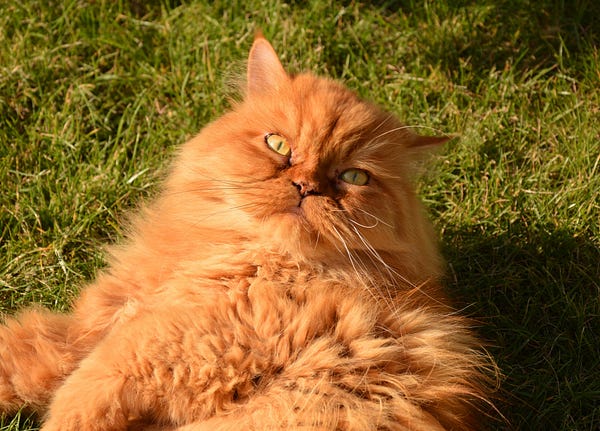
Welcome to Pet Parenting, your comprehensive guide to raising Persian cats, scientifically known as Felis catus. Persian cats, with their luxurious coats, calm demeanor, and royal appearance, are among the most cherished breeds. However, owning a Persian cat isn’t just about having a beautiful pet; it’s about understanding their unique needs and giving them the care they deserve.
In this detailed blog, we’ll explore every aspect of Persian cat parenting from their history and personality to grooming, feeding, and health care. Whether you’re a first-time pet parent or a seasoned cat lover, this guide has something for everyone!
Understanding the Persian Cat Personality
Who Are Persian Cats?
Persian cats are believed to have originated in Mesopotamia (modern-day Iran) and were popularized in Europe during the 17th century. They’re known for their calm demeanor, affectionate nature, and strikingly long, silky coats.
Key Traits:
- Calm and Friendly: Persian cats are gentle, making them ideal for families, singles, or even seniors.
- Low Activity Levels: They enjoy lounging and are less likely to climb on furniture compared to other breeds.
- High Affection Needs: Persian cats are lap cats who thrive on human interaction and love cuddles.
Fun Fact: Persian cats have a musical meow, often softer than other breeds.
Preparing Your Home for a Persian Cat
Creating a Safe and Comfortable Environment
Persian cats are indoor cats that love comfort. Preparing your home before their arrival can ease their transition and set the stage for a happy life.
Essentials to Set Up:
- Soft Bedding: Persian cats love soft, plush surfaces. Opt for washable materials.
- Cat Trees & Scratching Posts: While they aren’t climbers, scratching posts keep their claws healthy.
- Litter Box: Choose one with a low entry point for easy access.
- Toys: Persian cats enjoy interactive toys that stimulate their minds.
- Safe Zones: Remove toxic plants like lilies, pothos, or philodendrons, and secure breakables.
Tip:
Use pheromone sprays to reduce stress in a new environment.
Related Reading: [Persian Cat Checklist for First-Time Pet Parents]
Grooming a Persian Cat
Why Grooming is Vital
Persian cats have long, dense coats that require daily grooming to prevent matting and skin infections. Skipping grooming can lead to painful tangles and other health issues.
Step-by-Step Grooming Routine:
- Daily Brushing: Use a wide-toothed comb or a slicker brush to remove tangles.
- Bathing: Bathe them monthly using a cat-specific shampoo. Rinse thoroughly to avoid residue.
- Eye Care: Persian cats are prone to tear stains due to their flat faces. Clean with a soft cloth dampened in warm water.
- Nail Care: Trim nails every 2–3 weeks to prevent overgrowth.
- Ear Cleaning: Gently clean ears with a cotton ball and a vet-approved cleaner.
Tip: Start grooming when they’re kittens to make it a positive experience.
Feeding Your Persian Cat
Nutritional Needs
A Persian cat’s diet directly impacts its coat, energy levels, and overall health. High-quality, protein-rich food is essential.
Best Diet Plan:
- Dry Food: Helps reduce plaque buildup.
- Wet Food: Provides hydration and variety.
- Homemade Meals: Only if balanced and vet-approved.
Foods to Avoid:
- Chocolate, onions, garlic, grapes, and caffeinated drinks.
- Avoid fillers like corn and soy in commercial cat food.
Pro Tip:
Serve food in shallow bowls to accommodate their flat faces and prevent whisker fatigue.
Related Reading: [Persian Cat Diet: What to Feed and What to Avoid]
Health Concerns in Persian Cats
Common Health Issues and Prevention:
- Polycystic Kidney Disease (PKD): This genetic condition is common in Persian cats. Regular vet screenings can help.
- Brachycephalic Airway Syndrome: Their flat faces can cause breathing difficulties. Avoid overexertion and hot environments.
- Dental Problems: Persians are prone to periodontal disease. Regular dental check-ups and brushing are essential.
Health Care Tips:
- Schedule annual vet visits.
- Keep up with vaccinations.
- Monitor weight to prevent obesity.
Related Reading: [Signs Your Persian Cat Needs a Vet Visit]
Mental and Physical Stimulation
Why Enrichment Matters
Persian cats may be low-energy, but mental stimulation is crucial for their happiness.
Activities They Enjoy:
- Interactive Play: Laser pointers, feather wands.
- Puzzle Toys: Stimulate their problem-solving skills.
- Window Perch: They love watching birds and outdoor activities.
Tip:
Rotate toys weekly to maintain their interest.
Building a Bond with Your Persian Cat
How to Strengthen Your Relationship:
- Spend at least 30 minutes daily playing or cuddling with your cat.
- Use treats to reward positive behaviors.
- Speak softly; they respond well to calm, gentle voices.
Signs of a Happy Persian Cat:
- Purring, kneading, and following you around.
- A relaxed posture with slow blinks.
Related Reading: [How to Build Unbreakable Trust with Your Persian Cat]
Training a Persian Cat
Is Training Possible?
Yes! Persian cats can learn commands like “sit,” “stay,” and “come” with consistent positive reinforcement.
Litter Training Tips:
- Choose an easy-to-access spot.
- Use a scent-free, clumping litter.
- Clean the box daily to encourage use.
Tip:
Start training sessions after playtime when your cat is calm and focused.
Related Reading: [Training Tips for Persian Cats]
Embracing Persian Cat Parenting
Owning a Persian cat is a fulfilling journey that requires patience, love, and commitment. Their affectionate nature and royal demeanor make every effort worthwhile. With this guide, you’re well on your way to becoming the best pet parent for your Persian cat.
Explore More Topics on Persian Cats:
- [How to Recognize Signs of Stress in Persian Cats]
- [Top 10 Cat-Friendly Plants for Your Home]
Let’s start on this joyful journey together. Your Persian cat deserves the best and so do you!
Comments
Post a Comment